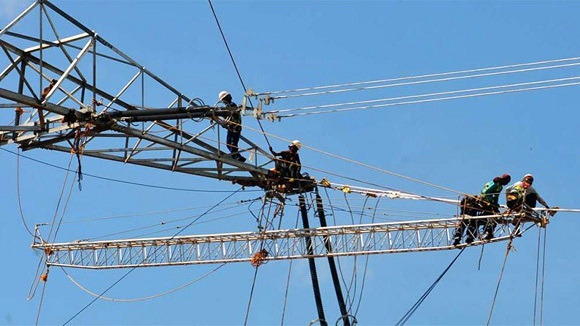Urban energy planning is a critical aspect of modern city development, focusing on the efficient, sustainable, and equitable use of energy resources. As urban areas continue to expand and the global population becomes increasingly concentrated in cities, the demand for energy grows, making strategic energy planning essential for sustainable urban growth.

1. The Importance of Urban Energy Planning
Urban energy planning is essential for several reasons. Firstly, cities are major consumers of energy, accounting for approximately 70% of global energy consumption. This concentration of energy use means that cities have a significant impact on global greenhouse gas emissions. Effective energy planning can help reduce emissions, mitigate climate change, and promote environmental sustainability.
Secondly, energy planning is crucial for ensuring energy security. As cities grow, the demand for energy can strain existing infrastructure, leading to shortages and blackouts. By planning for future energy needs, cities can develop resilient energy systems that ensure a reliable supply of electricity and other forms of energy.
Lastly, urban energy planning can enhance the quality of life for city residents. Access to reliable, affordable, and clean energy is a fundamental component of urban living, affecting everything from housing and transportation to healthcare and education. By prioritizing energy efficiency and the use of renewable resources, cities can improve air quality, reduce energy costs, and create healthier living environments.
2. Key Components of Urban Energy Planning
Effective urban energy planning involves several key components:
- Energy Efficiency: Improving energy efficiency is one of the most cost-effective ways to reduce energy consumption and greenhouse gas emissions. This can involve upgrading buildings to be more energy-efficient, promoting the use of energy-efficient appliances, and encouraging behavior changes that reduce energy use.
- Renewable Energy: Integrating renewable energy sources, such as solar, wind, and geothermal, into the urban energy mix is essential for reducing reliance on fossil fuels and lowering emissions. This can involve installing solar panels on rooftops, developing wind farms on the outskirts of cities, and utilizing geothermal energy for heating and cooling.
- Smart Grids: The development of smart grids can enhance the efficiency and reliability of urban energy systems. Smart grids use advanced technology to monitor and manage energy flows, enabling more efficient distribution and reducing the likelihood of outages. They also facilitate the integration of renewable energy sources and the use of electric vehicles.
- Decentralized Energy Systems: Decentralized energy systems, such as microgrids and distributed generation, can increase energy resilience and reduce transmission losses. These systems allow for local generation and consumption of energy, reducing the need for large-scale energy infrastructure and increasing the flexibility of the energy system.
- Transportation: Urban energy planning must also address transportation, which is a major source of energy consumption and emissions. Promoting the use of public transportation, cycling, and walking can reduce the energy demand for transportation. Additionally, the adoption of electric vehicles and the development of charging infrastructure are critical components of sustainable urban transportation planning.
3. Challenges and Solutions in Urban Energy Planning
Urban energy planning faces several challenges, including financial constraints, technological limitations, and political and social barriers. However, these challenges can be addressed through a combination of innovative solutions and collaborative efforts.
- Financial Constraints: Funding for energy projects can be a major barrier. Cities can address this by exploring various financing mechanisms, such as public-private partnerships, green bonds, and international grants. Investing in energy efficiency and renewable energy can also lead to long-term cost savings that offset initial investments.
- Technological Limitations: Rapid advancements in technology are needed to meet the growing energy demands of urban areas. Cities can foster innovation by supporting research and development, piloting new technologies, and collaborating with academic institutions and private companies.
- Political and Social Barriers: Effective urban energy planning requires strong political will and public support. Engaging stakeholders, including residents, businesses, and community organizations, in the planning process can help build consensus and ensure that energy policies reflect the needs and priorities of the community.
4. Case Studies and Best Practices
Several cities around the world have implemented successful urban energy planning initiatives that can serve as models for others. For example:
- Copenhagen, Denmark: Copenhagen aims to become carbon neutral by 2025. The city has invested heavily in energy efficiency, district heating, and cycling infrastructure. It also promotes the use of renewable energy, with wind turbines generating a significant portion of the city’s electricity.
- Freiburg, Germany: Freiburg is known for its commitment to sustainability. The city has implemented extensive energy efficiency measures, developed a robust public transportation system, and promoted the use of solar energy. Freiburg’s approach emphasizes community involvement and long-term planning.
- San Francisco, USA: San Francisco has set ambitious goals for reducing greenhouse gas emissions and increasing renewable energy use. The city has implemented energy efficiency programs, supported the installation of solar panels, and developed a comprehensive climate action plan.
Conclusion
Urban energy planning is a vital component of sustainable city development. By focusing on energy efficiency, renewable energy, smart grids, decentralized energy systems, and sustainable transportation, cities can reduce their environmental impact, enhance energy security, and improve the quality of life for residents. Despite the challenges, innovative solutions and collaborative efforts can drive progress and create resilient, sustainable urban energy systems. As cities around the world continue to grow, effective urban energy planning will be essential for ensuring a sustainable future.



